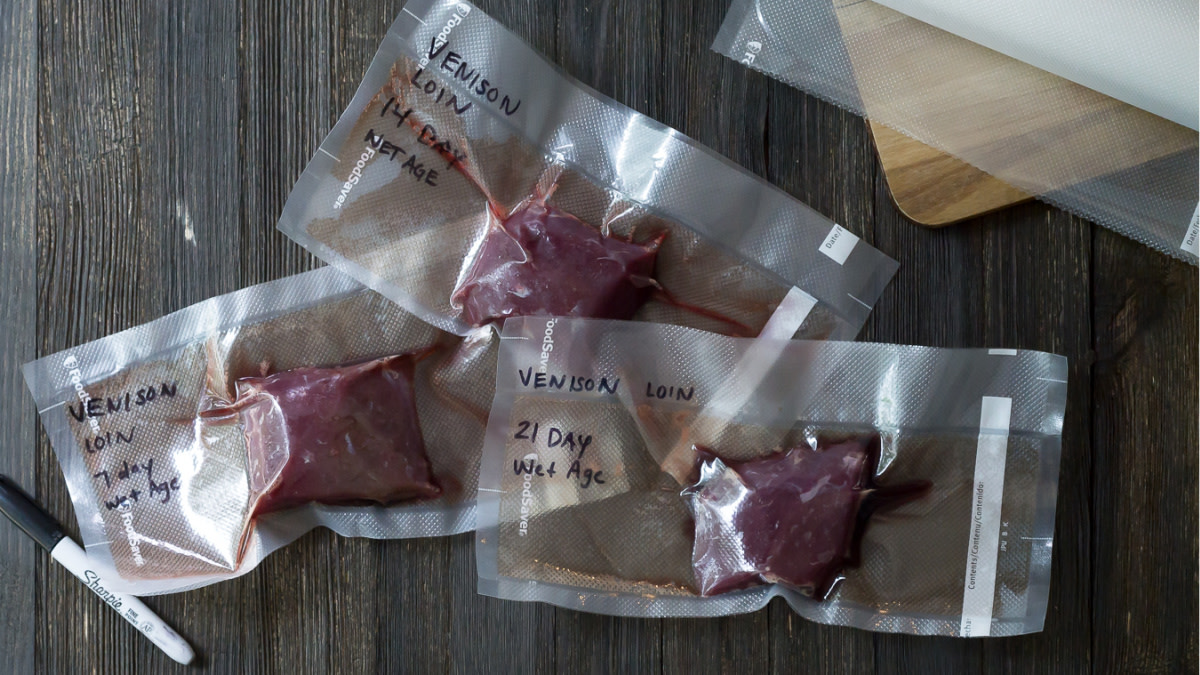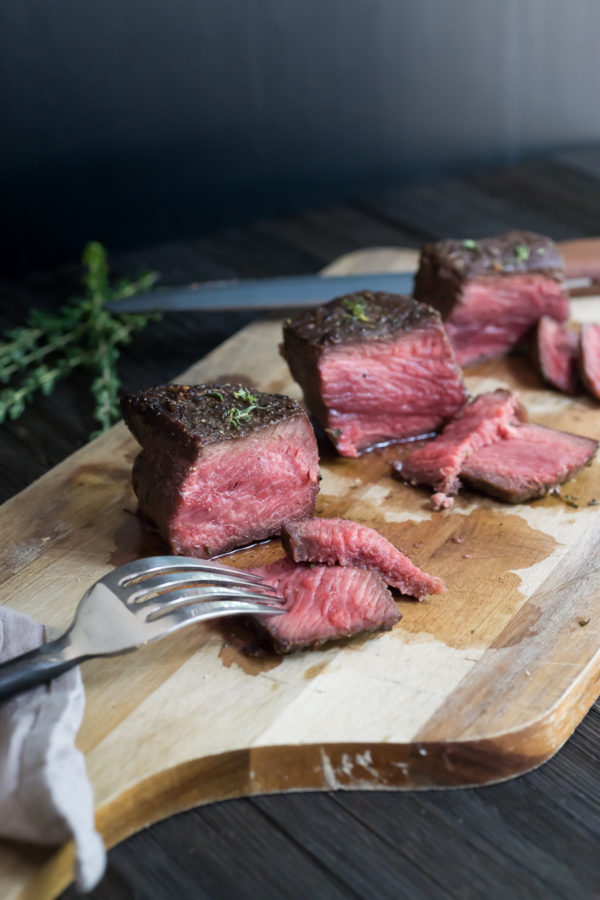
Aging meat isn’t really optional when it comes to wild game. For lean, tough cuts that hunters are familiar with, this is a necessity to create a quality end product.
There are two types of aging, each with their own pros and cons. Dry aging is considered to be the traditional form of aging. For those who aren’t set up with the right equipment to hang a critter, wet aging is a great alternative. This process is really simple, but when it comes to venison, there isn’t much info available on the wet aging process. So I set out to test different aging times for venison loin and compare whether or not the difference of tenderness was worth the time invested.
Before I get into the details, let’s be clear on what aging is and why we want to do it. Animals are athletes, which means their muscles are highly developed. Enzymes in the body are constantly building up and breaking down protein and the breakdown process continues even after death. Rigor Mortis takes over for a short period of time after the kill and then calpain, the primary enzyme responsible for this action, begins to break down muscle fiber. Therefore aging is sometimes referred to as a decaying process, but understand this is not the same as spoiling your meat.
Wet aging is relatively new. Essentially all you do is vacuum seal your meat and leave in the fridge for 7 to 28 days. The enzymes are still at work breaking down the tissue and the bag seals out air to prevent contamination. This is a much easier process that can be done to frozen meat. In fact, many times I take meat from the freezer a week before I plan to cook and allow it to age if I didn’t do it prior to freezing.
This technique is better for lean cuts that have no protective barrier of fat because it eliminates water loss. The downside to wet aging is that the meat does not concentrate and develop the depth of flavor the way dry aging can because there’s no water loss or mold growth. It does, however, rest in a bag of its own juices and blood, adding what most consider “gamey” flavor.
Because of this, I allow the meat to sit in the fridge unwrapped on a cooling rack set inside a sheet tray for 24 hours prior to sealing. This gives the meat time to dry out and excess blood drip into the tray before sealing in the bag. For example, if you shoot a deer or antelope that’s been eating a bunch of sage, I would recommend this. After every 7 days of aging, pour out the blood, pat it dry, and reseal again, repeating until you are done aging.
During my research I came across a few standard time frames; 7 to 14 days seemed to be the typical length. That didn’t seem quite long enough for venison. To test different aging times, I took a 6-inch portion of the backstrap and let it dry age in the fridge (set at 35 degrees) for 24 hours to let blood run out. Then, I vacuum sealed the loin and left it in the fridge for another 7 days. After a week, I opened the bag, drained any blood that leeched out, cut a 2-inch filet off, labeled it, and froze it. I vacuum sealed the leftover loin and let it age for another week. Again, I cut a 2-inch filet off, labeled it, and froze it. Finally, I resealed the last 2-inch filet and let it age for one more week. By the time I was done, I had three 2-inch filets for testing: a 7-, 14-, and 21-day age.
When ready to test, I defrosted the other two steaks and seasoned them with a touch of salt, pepper, garlic, and thyme. I decided to cook a la plancha by searing them in a cast iron pan on the grill. I tried to cook each to the exact same consistency of medium-rare. You can see by the pictures that there isn’t much of a difference in appearance between the aged filets. In fact, there wasn’t a huge difference in flavor either; none of the pieces had any off-putting flavor. I didn’t find a big difference in tenderness between the 7-day and 14-day filets, but the 21-day age was melt-in-your mouth tender.
So what did I learn? I’d recommend a 14-day minimum age for venison, but will occasionally do 21 or 28 days. Even though this was tested using backstrap, I think it will make a dramatic affect on other primal cuts, as well. My only regret with the test was that I didn’t have more loin to wet age and experiment with. It was so damn good.







